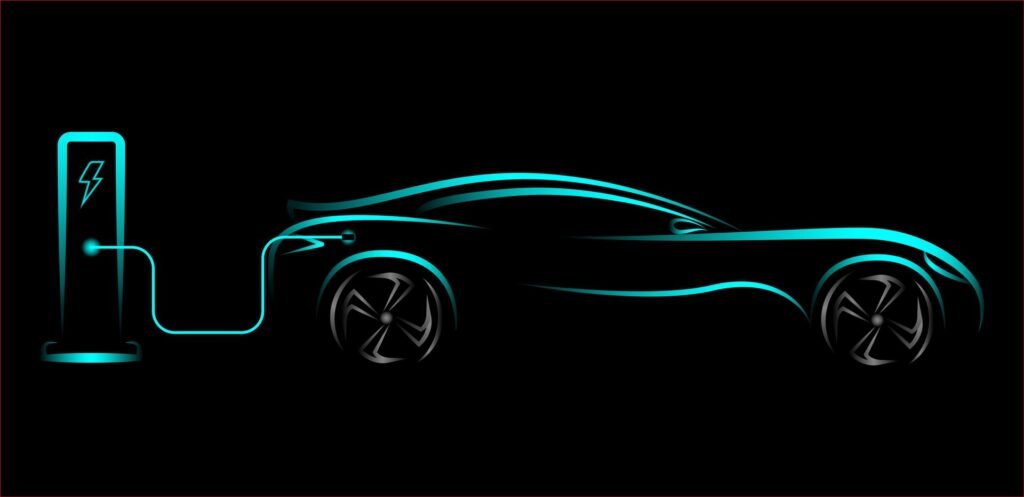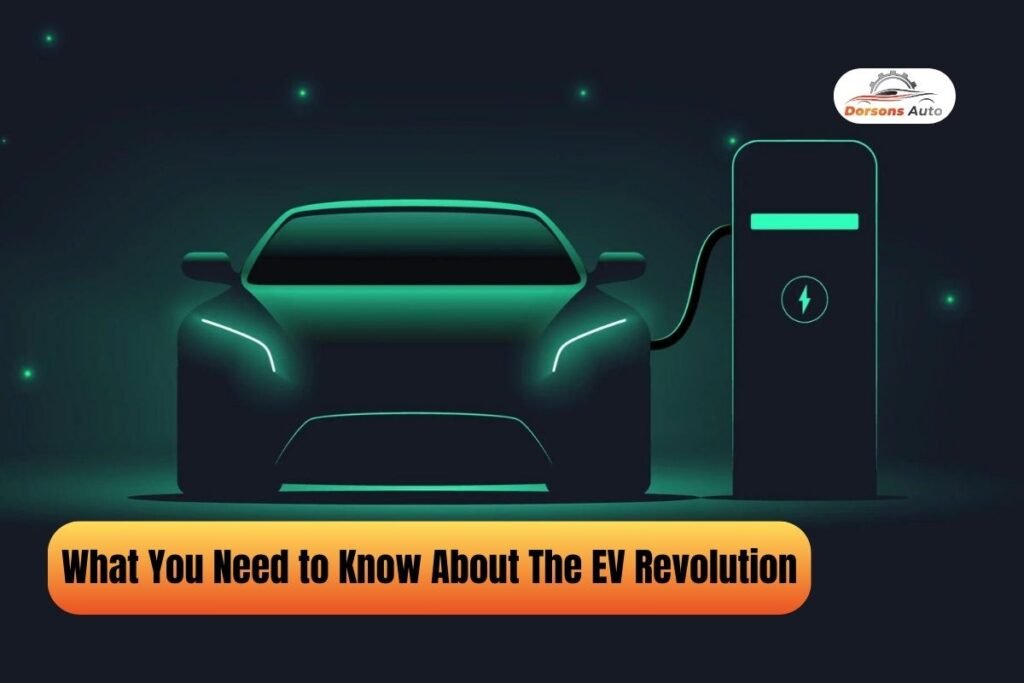Do you want to reduce your carbon footprint by purchasing an electric vehicle (EV)? Explore the ‘Go-Green’ movement with our in-depth EV primer. This book provides you with all the information you need to make an informed decision by covering the technology, its benefits, drawbacks, worldwide influence, and a historical tour.
About 60% of the carbon pollution from the transportation sector is mitigated by EVs, which are a critical component in the fight against greenhouse gas emissions. Discover eight important EV industry statistics that go beyond its positive effects on the environment. This is your concise guide to all the things necessary to know about electric vehicles.
Passenger EVs Come In 4 Kinds: BEVs, FCEVs, PHEVs, and HEVs.
HEVs, PHEVs, BEVs, and FCEVs are the four primary categories of electric cars (EVs).
HEVs (Conventional Hybrid Vehicles):
- Mix a gasoline engine with an electric powertrain.
- found in tractors, buses, boats, vehicles, pickup trucks, and airplanes.
Examples: Toyota Prius, Peugeot 508 RXH HYbrid4, Ford Fusion Hybrid.
PHEVs (Plug-in Hybrid Electric Vehicles):
- Include both electric and gasoline-powered motors.
- When the electric power range is reached, switch to gasoline.
- EV charging station-rechargeable.
Examples: Toyota RAV4, Mitsubishi Outlander PHEV, Ford Escape.

BEVs (Battery Electric Vehicles):
- Total Electric; no gasoline-powered machinery.
- Plugged into outlets or stations to receive a charge.
Examples: Cadillac Lyriq, Hyundai Kona, Tesla Model 3.
FCEVs (Fuel Cell Electric Vehicles):
- An electric motor is driven by fuel cells.
- Regarded as zero-emission vehicles but less efficient than BEVs.
- Only release heat and water, maybe together with contaminants associated to hydrogen.
Examples: Toyota Mirai, Hyundai Nexo.
Regardless of the source of electricity, EVs have a lower carbon footprint than gasoline-powered cars.
Whichever where the electricity comes from, cars that run on gasoline have a larger carbon footprint than electric vehicles (EVs).
Plug-in hybrid and battery electric vehicles (EVs) also need grid electricity. Numerous grids rely on fossil fuels, while others also employ renewable energy. Despite this, EVs convert electricity efficiently, which makes them a more economical and environmentally friendly choice.
Compared to conventional internal combustion vehicle charging, grid-connected EV charging results in lower greenhouse gas emissions. The Union of Concerned Scientists (UCS) has an online tool that you can use to estimate your potential carbon savings. To learn about the environmental advantages, enter your zip code along with the make and model of your EV.

EVs: A Greener Way To Drive
Because electric vehicles (EVs) have larger lithium-ion batteries than gasoline-powered cars, producing EVs involves greater emissions. With an 84-mile range, the typical mid-sized EV produces 15% higher emissions during production.
EVs swiftly made up for this increased production footprint, though. They surpass and continue to outperform gasoline automobiles in terms of emission reduction after just 18 months of operation. The Union of Concerned Scientists (UCS) highlights the long-term environmental benefits of electric vehicles (EVs) by stating that the typical EV achieves 88 miles per gallon, which is equal to the greenhouse gas emissions of an internal combustion automobile.
EVs: Affordably Priced Future Is Here
Electric vehicles (EVs) are quickly getting closer to being as affordable as conventional gas-powered cars, mostly due to the decreasing cost of Li-Ion batteries. Ten years ago, the cost of producing a Li-Ion battery—which is essential for electric vehicles—was about $1,100 per kWh. But by 2023, estimates point to a sharp decline to $100 per kWh.
Consequently, it is predicted that the production costs of EVs will be equal to those of gas-powered cars. The manufacturer’s suggested retail price (MSRP) of an electric vehicle with a 350-mile range is anticipated to resemble the price of a comparable Toyota Camry by 2023, according to ARK Invest. Moreover, expenses are expected to drop by 53% between 2021 and 2025, which could make the EV vehicle around $8,000 more cost-effective than the Camry. This prediction points to an interesting and reasonably priced future for electric cars.
The Evolution of EV Charging: A Decade of Growth
By 2030, the number of public EV charging stations in the US is expected to more than tenfold, from approximately 50,000 to the lofty target of 500,000 nationally. The U.S. Department of Energy (DOE) and the U.S. Department of Transportation (DOT) have made a major investment, agreeing to invest at least $5 billion over the next five years.
Motivated by legislation enacted in 2021, the program seeks to create a uniform, location-neutral network spanning 75,000 kilometers of the national highway system. The intention is to make EV charging easier without imposing limitations on car manufacturers or charging service providers. Late September 2022 saw the start of a groundbreaking decade for EV charging infrastructure in the US with the adoption of the Act and the funding of its inaugural EV infrastructure projects.
Transit’s EV Revolution: Buses Take the Lead
Leading the charge in the electric vehicle (EV) revolution are public transportation buses. In the United States, there are more than 500 public transportation bus systems that run regularly. Proactive programs such as the Los Angeles Metro feature complete fleets of electric buses that emit no emissions.
Leading the way in this shift is California, which plans to have all of its transit buses run on electricity within the next 20 years. Every bus operating on Californian roads by 2040 will be an emission-free, clean electric vehicle, which is a big step toward sustainable public transportation.
EV Trucks Are Getting Popular: A Step Ahead of EV Buses
Trucks are also part of the electric vehicle (EV) revolution; there are already 70 different versions of zero-emission trucks available. California towns achieved a first for the country by securing the first-ever production standard for electric trucks. Truck makers will have to offer a certain proportion of zero-emission vehicles starting in 2024, which might lead to a potential change in the country’s truck market toward the use of electric vehicles.
Notably, the EV sector helps create jobs in the US, which emphasizes the benefits of switching to electric cars from an economic standpoint.

American Jobs Increased By The EV Industry
The employment economy in the United States is greatly impacted by the electric vehicle (EV) sector. The U.S. Energy and Employment Report from 2019 states that over 250,000 American people were employed in the production, distribution, repair, and upkeep of electric, hybrid, and hydrogen fuel-cell automobiles.
According to the BlueGreen Alliance, approximately 200 manufacturing sites employ over 69,000 people in the United States and are actively involved in developing technology and parts for electric and hybrid vehicles, SUVs, and pickup trucks.
Frequently Asked Questions [FAQs]
Why are EVs loved?
EVs are loved for being the key to reducing carbon footprint and urban pollution.
*They are a lot easier to maintain and own.
*EVs deliver all the torque immediately, can be upgraded just like your phone, and are only
How long does it take to charge an EV?
Charging times vary among EV models. The Tata Nexon EV and MG ZS EV support fast charging, reaching 80% capacity in 60 and 50 minutes, respectively. Premium models like the Mercedes Benz EQC and Jaguar E-Pace Hybrid can achieve 80% capacity in just 30 minutes at rapid charging stations. Ola’s Hypercharger network for two-wheelers can charge 50% in 18 minutes, providing a 75 km range.
How do you charge your EV?
EVs can be charged at home using personal facilities or at charging stations. Standard and fast charging stations are widely available, including dedicated facilities from manufacturers and public charging stations.
The Bottom Line
Projections suggest that by 2030, electric vehicles (EVs) could constitute nearly half (47%) of all annual vehicle sales in the U.S. A 2022 survey by ConsumerReports.org revealed a notable shift, with 14% of American drivers expressing a definite interest in purchasing or leasing an electric-only vehicle, a substantial increase from the 4% reported in their 2020 survey.
Anticipated trends include enhancements to the nation’s charging infrastructure, a broader market entry of lower-priced EVs, and extended driving ranges due to advancements in battery technology.
Read More:
Top 8 Coolest Car Tech Advancements In 2024
10 Best Underrated Cars That Deserve Your Attention

